外固定支架与钢板内固定治疗不稳定型桡骨远端骨折的 Meta 分析
乐立盛 余光书 江小香 王宇
. Meta 分析 Hip prosthesis .
外固定支架与钢板内固定治疗不稳定型桡骨远端骨折的 Meta 分析
乐立盛 余光书 江小香 王宇
目的 探讨外固定支架与钢板内固定治疗不稳定型桡骨远端骨折的疗效差异。方法 运用计算机检索 PubMed、Cochrane Library、EMBASE、BIOSIS、Ovid databases、中国知网 ( CNKI )、维普数据库、万方数据库以及手工检索相关文献的参考文献。收集 1990 年 1 月 1 日至 2014 年 9 月 1 日国内外公开发表的有关外固定支架与钢板内固定治疗不稳定型桡骨远端骨折的临床疗效对比随机对照的英文与中文文献。严格评价纳入研究的方法学质量并提取资料,统计软件采用 RevMan 5.1.0。结果 共纳入 14 个随机对照试验文献,其中英文文献 10 篇,中文文献 4 篇。外固定支架治疗组 656 例,钢板内固定治疗组 644 例。根据改良后的Jadad 评分标准,有 8 篇文献为高质量文献,6 篇文献为低质量文献。偏倚风险评估为中等。Meta 分析结果显示,外固定支架治疗组与钢板内固定治疗组在手术因素造成神经损伤 ( RR=1.14,95% CI:0.08~16.63,P= 0.16 )、术后反射性交感神经营养不良的发生率 ( RR=0.71,95% CI:0.24~2.08,P=0.53 )、术后腕部明显畸形的发生率 ( RR=1.22,95% CI:0.82~1.82,P=0.33 ) 及需进一步手术治疗的发生率 ( RR=1.12,95% CI:0.29~4.37,P=0.87 ) 方面差异无统计学意义。钢板内固定比外固定支架具有更高的 DASH 评分 ( MD=3.76,95% CI:0.13~7.40,P=0.04 ),然而外固定支架治疗却有更高的腕关节功能恢复优良率 ( RR=0.88,95% CI:0.79~4.73,P=0.98 ) 与更少的术后感染率 ( RR=2.53,95% CI:1.36~4.73,P=0.004 )。结论 外固定支架与钢板内固定各有优缺点,需要根据实际情况决定选择不稳定型桡骨远端骨折的治疗方案。
外固定器;骨折固定术,内;桡骨骨折;Meta 分析
桡骨远端骨折是创伤骨科最常见的骨折之一,约占骨科急诊的 20%,多见于老年女性[1-3]。大多数桡骨远端骨折可通过闭合复位石膏固定而获得满意的疗效,但是不稳定型的桡骨远端骨折采用保守治疗时常出现骨折再移位、畸形愈合、功能恢复不佳等情况,所以目前越来越多学者主张不稳定型桡骨远端骨折需要手术治疗[4-6]。
桡骨远端骨折的常见手术方式有闭合复位外固定支架固定和切开复位钢板内固定两种。外固定支架由于操作简单、创伤小、血供破坏少及远离骨折端固定等优势而被许多医生所推崇[7-8]。但是,外固定支架对无韧带附着的骨折块复位效果不佳,可能会造成骨折不愈合、畸形愈合或腕关节功能恢复不佳等[9-10]。切开复位钢板固定可以直接复位骨折块,固定牢固,术后可早期进行功能锻炼[11-12]。但是,切开复位存在需要暴露骨折部位,对软组织创伤较大,手术操作相对复杂等缺点[13]。因此,如何选择合适的手术方式治疗不稳定型桡骨远端骨折还存在着较大争议。
为了进一步系统比较外固定支架与钢板内固定治疗不稳定型桡骨远端骨折的功能结果及并发症,本研究通过评估可能混淆的变量及研究中固有的未测量偏倚,使用 Meta 分析方法对外固定支架与钢板内固定治疗不稳定型桡骨远端骨折进行汇总分析,可以更好地评价两种手术方法对不稳定型桡骨远端骨折治疗的临床效果及安全性,以便指导临床实践。
资料与方法
一、文献检索
分别以“distal radial fractures”、“distal radius fractures”、“fracture radius”、“fractures radius”、“fractures of distal radius”、“colles fractures”、“smith fractures”、“wrist injuries”、“external fixator”、“fixator external”、“internal fixation”、“internal fixator”、“plate”、“plating”和“桡骨远端骨折”、“桡骨远端不稳定骨折”、“外固定支架”、“外固定”、“内固定”、“钢板”等为检索词,以英语和汉语为检索语种,运用计算机检索 PubMed、Cochrane Library、EMBASE、BIOSIS、Ovid databases、中国知网 ( CNKI )、维普数据库、万方数据库以及手工检索相关文献的参考文献。收集1990 年 1 月 1 日至 2014 年 9 月 1 日国内外公开发表的有关外固定支架与钢板内固定治疗不稳定型桡骨远端骨折的临床疗效对比随机对照实验文献,查找并阅读文献原文。
二、纳入与排除标准
1. 纳入标准:( 1 ) 研究对象:成人不稳定型桡骨远端骨折;( 2 ) 研究设计:随机对照试验,使用盲法;( 3 ) 干预措施:外固定支架与钢板内固定治疗不稳定型桡骨远端骨折;( 4 ) 结局指标:术后功能、术后并发症及再次手术率等。
2. 排除标准:( 1 ) 无对照的临床病例报告与非随机对照试验;( 2 ) 研究对象及干预措施不符合入选标准;( 3 ) 原始文献试验设计不严谨;( 4 ) 未提取到足够的资料用于数据合并。
三、资料提取
采用双人平行摘录方法,由两位研究者独立复习所有文章的标题,如果文章的标题显示这篇文献有可能符合入选标准,即找到该文的摘要并复习,然后选择潜在合格的文献。对可能符合纳入标准的试验,阅读全文以最终确定是否符合纳入要求。两位评价者交叉核对试验结果,对有分歧而难以确定是否纳入的试验通过讨论或由第三位评价者决定其是否纳入。对入选文献摘录作者姓名、患者数量、治疗方案、文献出版时间、Jadad 评分以及术后恢复指标、术后并发症等信息。
四、偏倚风险评估和文献质量评价
偏倚风险评估按照 Cochrane 手册概述的干预系统评价,其按照以下三大类研究进行[14]:是 ( 低偏倚风险 ):所有符合标准;不清楚 ( 中度偏倚危险 ):一个或多个关键部分满足;否 ( 高偏倚风险 ):一个或不符合以上标准。两位评价者独立评估每一个随机对照试验。任何分歧通过讨论和协商解决。
文献质量评价根据改良后的 Jadad 评分标准,主要对随机序列的产生、随机化隐藏、是否实施盲法、是否描述退出或失访例数及原因来进行质量评价。正确地描述了随机序列产生的方法计 2 分,提到随机试验但未描述随机分配方法计 1 分;恰当地进行了随机化隐藏计 2 分,提到随机化隐藏计1 分;正确描述双盲方法的计 2 分,提到使用“双盲”计 1 分;描述了撤出或退出的数目和理由计1 分,未描述撤出或退出的数目或理由计 0 分。Jadad 量表满分为 7 分,3 分及以下属于低质量研究,4 分及以上的研究可认为质量较高[15]。
五、统计学分析
采用 Cochrane 协作网提供的 RevMan 5.1.0 统计软件进行数据分析。输入数据时实行双人核对以确保准确无误。计数资料用相对危险度 ( relative risk,RR ) 表示,计量资料用权重的均值 ( weighted mean difference, WMD ) 表示,两者均用 95% 的可信区间 ( confudence interval,CI ) 表达。当实验结果出现显著的异质性时,则采用随机效应模型 ( random effects model ),反之则采用固定效应模型 ( fixed effects model )。如果发现异质性的存在,一定要检查该研究的总体、治疗方法、结果的测量以及方法学,以确定异质性的来源。对无法进行定量合成或者极低事件发生率的测量指标,则通过描述予以定性评价。绘制漏斗图以检验所纳入文献是否存在发表偏倚。
结 果
一、检索结果与纳入文献的量评价
通过检索前文提到的数据库,一共检索出 474篇可能符合纳入标准的文献,通过阅读题目、摘要及全文,14 篇文献符合纳入标准,其中英文文献 10 篇,中文文献 4 篇[16-29]。外固定支架治疗组656 例,钢板内固定治疗组 644 例 ( 表 1~2 )。
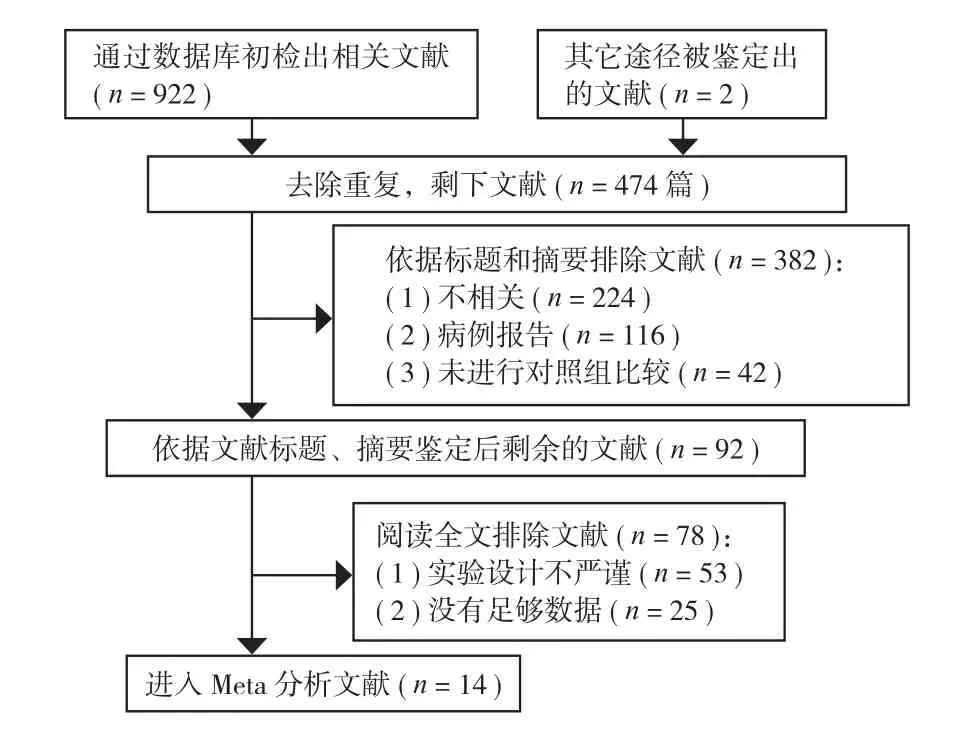
表 1 随机对照实验文献的研究流程图Tab.1 Selection process for randomized controlled trials, included in the meta-analysis

表 2 文献基本信息Tab.2 Main characteristics of RCTs included in the meta-analysis
根据改良后的 Jadad 评分标准,8 篇文献为高质量文献,6 篇文献为低质量文献。偏倚风险评估为中等,具体结果如图示 ( 图 1 )。

图 1 偏倚风险评估Fig.1 Risk-of-bias graph
二、指标分析结果
手术因素造成神经损伤的比较:10 篇文章报道了手术造成的神经损伤,异质性检验 χ2=6.15,P= 0.63,I2=0%,表明各研究间具有临床及统计学上的同质性 ( P>0.10,I2<50% ),故采用固定效应模型分析。Meta 分析结果显示,外固定支架与钢板内固定治疗桡骨远端不稳定型骨折对神经损伤差异无统计学意义 ( RR=1.14,95% CI:0.08~16.63,P= 0.16 ) ( 图 2 )。
术后反射性交感神经营养不良的比较:5 篇文章报道了术后反射性交感神经营养不良的发生情况。异质性检验 χ2=1.39,P=0.71,I2=0%,表明各研究间具有临床及统计学上的同质性 ( P>0.10,I2<50% ),故采用固定效应模型分析。Meta 分析结果显示,使用外固定支架与钢板内固定治疗桡骨远端不稳定性骨折出现反射性交感神经营养不良情况差异无统计学意义 ( RR=0.71,95% CI:0.24~ 2.08,P=0.53 ) ( 图 3 )。
术后感染发生率的比较:8 篇文章报道了术后感染情况。异质性检验 χ2=3.97,P=0.78,I2= 0%,表明各研究间具有临床及统计学上的同质性( P>0.10,I2<50% ),故采用固定效应模型分析。Meta 分析结果显示,钢板内固定治疗组的感染发生率与外固定支架治疗组的发生率差异有统计学意义( RR=2.53,95% CI:1.36~4.73,P=0.004 )。在森林图中,结合 RR 值,合并后菱形位于中线右侧,说明钢板内固定治疗不稳定型桡骨远端骨折的感染发生率更高 ( 图 4 )。
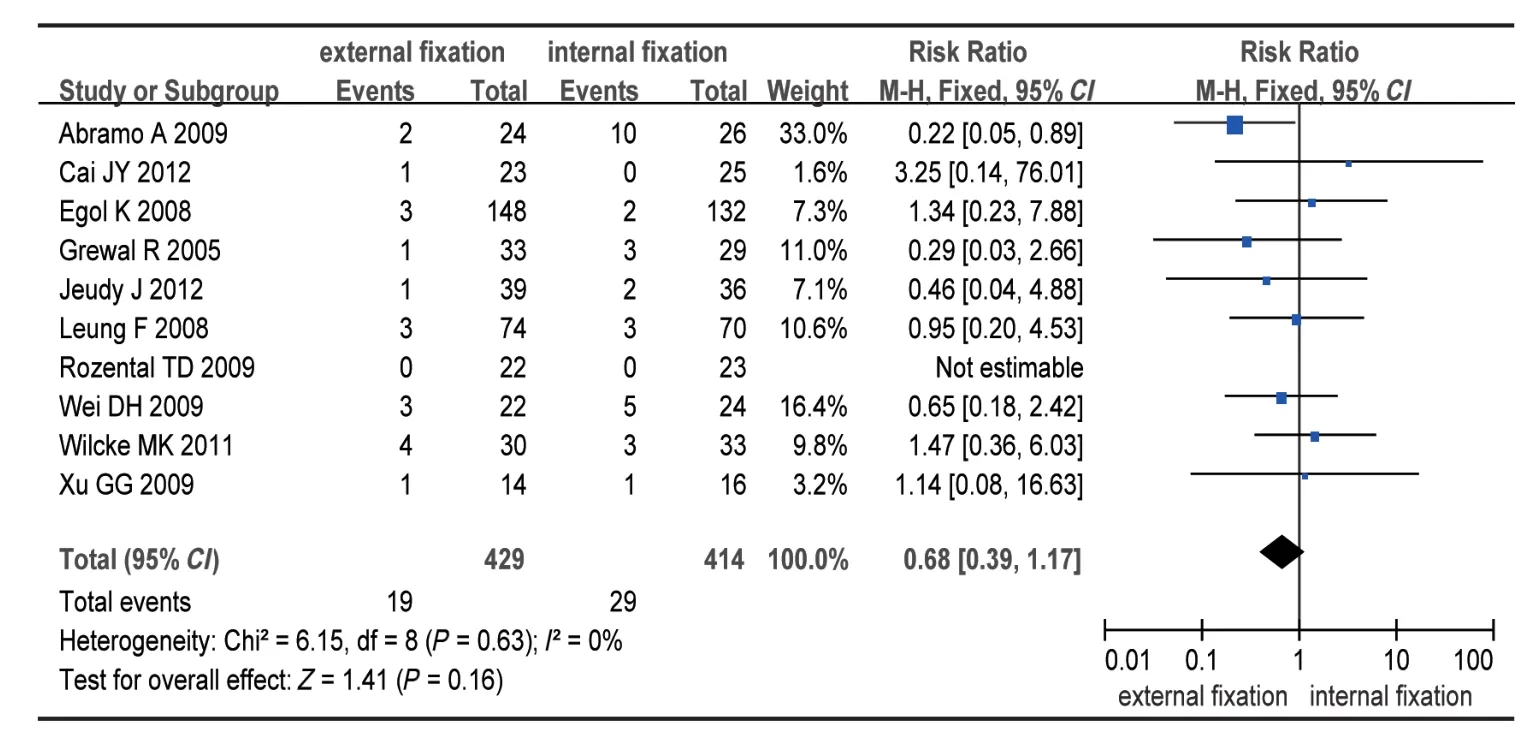
图 2 手术因素造成神经损伤的 Meta 分析Fig.2 Table and forest plot illustrating the meta-analysis of the nerve complications of surgery

图 3 术后出现反射性交感神经营养不良的 Meta 分析Fig.3 Table and forest plot illustrating the meta-analysis of the refex sympathetic dystrophy
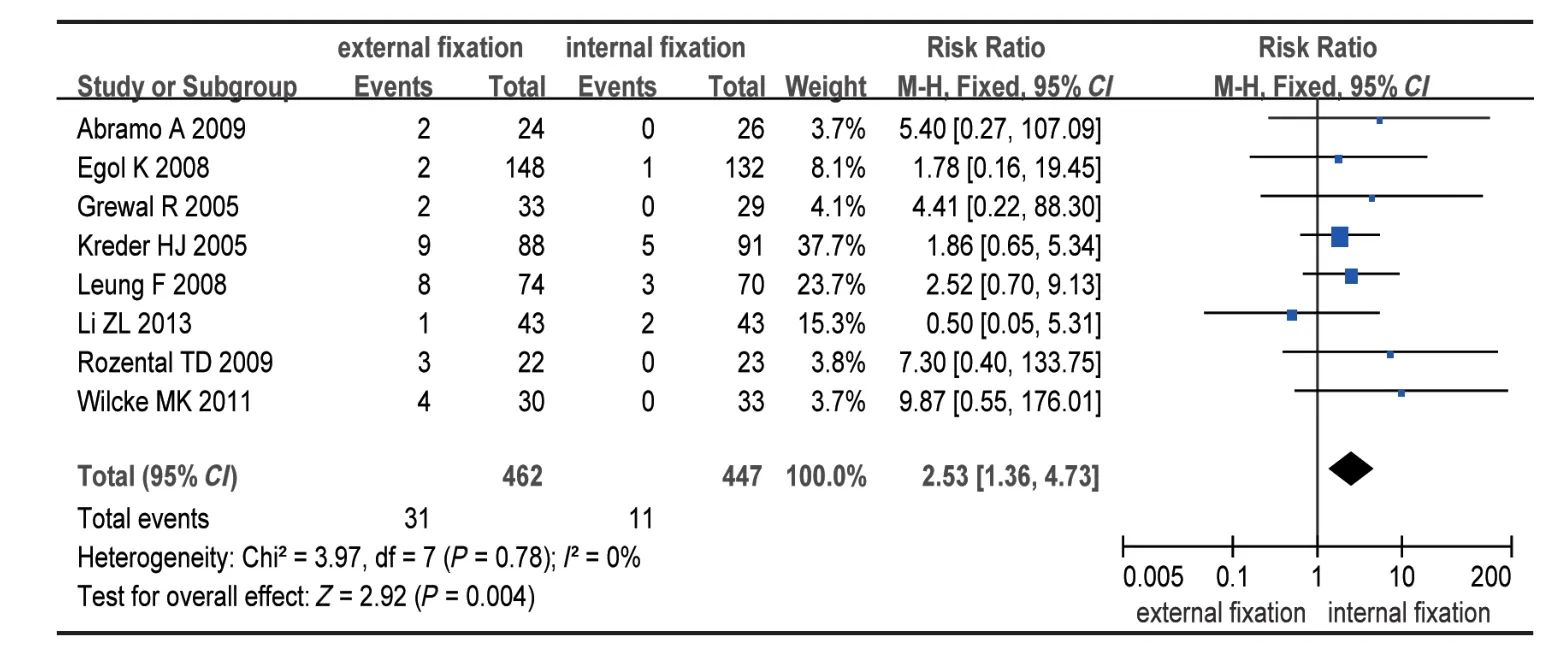
图 4 术后感染发生率的 Meta分析Fig.4 Table and forest plot illustrating the meta-analysis of the postoperative infections
术后出现腕部明显畸形的比较:6 篇文章报道了术后腕部的畸形情况。异质性检验 χ2=4.47,P=0.48,I2=0%,表明各研究间具有临床及统计学上的同质性 ( P>0.10,I2<50% ),故采用固定效应模型分析。Meta 分析结果显示,外固定支架治疗组与钢板内固定治疗组的腕部畸形差异无统计学意义 ( RR=1.22,95% CI:0.82~1.82,P=0.33 )( 图 5 )。
需进一步手术治疗的比较:6 篇文章报道了进一步手术治疗情况。异质性检验 χ2=13.24,P= 0.02,I2=62%,表明各研究间无同质性 ( P>0.10,I2<50% ),故采用随机效应模型分析。Meta 分析结果显示,外固定支架治疗组与钢板内固定治疗组需要进一步手术治疗差异无统计学意义 ( RR=1.12,95% CI:0.29~4.37,P=0.87 ) ( 图 6 )。
术后 DASH 评价的比较:4 篇文章报道了术后DASH 的评价。异质性检验 χ2=128,P=0.73,I2= 0%,表明各研究间具有临床及统计学上的同质性( P>0.10,I2<50% ),故采用固定效应模型分析。Meta 分析结果显示,外固定支架治疗组与钢板内固定治疗组在 SASH 评价上差异具有统计学意义( MD=3.76,95% CI:0.13~7.40,P=0.04 )。在森林图中,结合 WMD 值,合并后菱形位于中线右侧,说明钢板内固定治疗不稳定型桡骨远端骨折具有更好的 DASH 评分 ( 图 7 )。
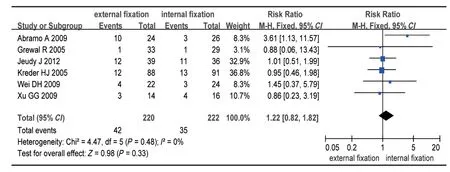
图 5 术后出现腕部畸形情况的 Meta 分析Fig.5 Table and forest plot illustrating the meta-analysis of the postoperative deformity
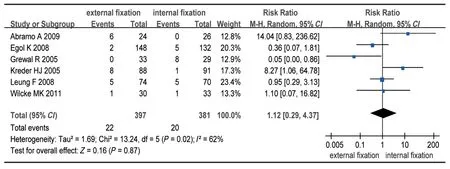
图 6 需进一步手术治疗的Meta 分析Fig.6 Table and forest plot illustrating the meta-analysis of the further surgrery

图 7 术后 DASH 评价的 Meta分析Fig.7 Table and forest plot illustrating the meta-analysis of the postoperative DASH scores
术后腕关节功能恢复的优良率比较:5 篇文章报道了术后腕关节功能的恢复情况。异质性检验χ2=5.91,P=0.21,I2=32%,表明各研究间具有临床及统计学上的同质性 ( P>0.10,I2<50% ),故采用固定效应模型分析。Meta 分析结果显示,钢板内固定治疗组与外固定支架治疗组的术后腕关节功能恢复差异有统计学意义 ( RR=0.88,95% CI:0.79~4.73,P=0.98 )。在森林图中,结合 RR 值,合并后菱形位于中线左侧,说明外固定支架治疗不稳定型桡骨远端骨折的腕关节功能恢复的优良率更高 ( 图 8 )。
三、发表性偏倚的识别
本 Meta 分析在检索、文献选择及数据提取过程中均严格按照相关要求,但是文献质量仍相对较低,因而对漏斗图检出偏倚的效能会产生一定的影响。从漏斗图综合分析,漏斗图基本对称,无明显异常点,判断存在发表偏倚的可能性较小。
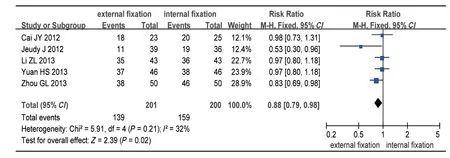
图 8 术后腕关节功能恢复优良率的 Meta 分析Fig.8 Table and forest plot illustrating the meta-analysis of the activities of wrist
讨 论
本研究采用 Meta 分析方法对 14 篇随机对照实验进行汇总分析发现外固定支架治疗组与钢板内固定治疗组在手术因素造成神经损伤、术后反射性交感神经营养不良的发生率、术后腕部明显畸形的发生率及需进一步手术治疗的发生率方面无明显差异。钢板内固定比外固定支架具有更高的 DASH 评分,然而外固定支架治疗却有更高的腕关节功能恢复优良率与更少的术后感染率。
桡骨远端骨折是临床骨科的常见病、多发病,但是对于不稳定型桡骨远端骨折的治疗仍较棘手。一般认为桡骨远端骨折没必要讲究解剖复位,后期合理的功能康复训练才是治疗的关键[30-31]。但是,近几年随着对桡骨远端骨折生物力学、成像技术等研究的深入以及患者对生活质量的更高要求,手术治疗不稳定型桡骨远端骨折已成共识[32]。手术治疗主要是恢复关节骨性结构的正常关系,让患者早期行功能康复锻炼。其中外固定支架和钢板内固定是最常见的两种手术治疗方法,但是对于这两种治疗方法的选择目前还存在着争论。本研究结果显示外固定支架与钢板内固定在术后感染发生率、DASH 评分及腕关节功能恢复等方面存在一定的差异,因此在选择治疗方案时要重视不稳定型桡骨远端骨折术后的功能恢复及并发症等差异。
本研究存在以下不足:首先,所纳入的研究数有 14 篇,但是其中的 6 篇文献质量低于 4 分,且整体的研究样本数偏少,因此其统计效能有待提高;其次,有些文献的临床试验数据未充分报告,使提取的有效统计量有限,且随访时间存在一定的差异,因此存在研究方法学上的某些不足;再者,不同手术操作者的技术水平差异较大,在一定程度上影响统计结果,因而临床异质性可能偏大。
综上所述,虽然本研究存在一定的局限性,但是总体而言,钢板内固定比外固定支架具有更高的DASH 评分,然而外固定支架治疗却有更高的腕关节功能恢复优良率与更少的术后感染率。因而,不稳定型桡骨远端骨折是选择外固定支架还是选择钢板内固定需要根据实际情况决定,包括骨折类型、移位程度、患者年龄、合并损伤、骨质疏松程度及患者要求等,同时也需要今后有更多更高质量的文献能够进行更详细的循证医学分析以更好指导临床实践。
[1] Nellans KW, Kowalski E, Chung KC, et al. The epidemiology of distal radius fractures. Hand Clin, 2012, 28(2):113-125.
[2] Tahririan MA, Javdan M, Nouraei MH, et al. Evaluation of instability factors in distal radius fractures. J Res Med Sci,2013, 18(10):892-896.
[3] Sigurdardottir K, Halldorsson S, Robertsson J, et al. Epidemiology and treatment of distal radius fractures in Reykjavik, Iceland, in 2004. Comparison with an Icelandic study from 1985. Acta Orthop, 2011, 82(4):494-498.
[4] Neidenbach P, Audige L, Wilhelmi-Mock M, et al. The effcacy of closed reduction in displaced distal radius fractures. Injury,2010, 41(6):592-598.
[5] Vargaonkar G. Distal end radius fractures: evaluation of results of various treatments and assessment of treatment choice. Chin J Traumatol, 2014, 17(4):214-219.
[6] Chung KC, Shauver MJ, Birkmeyer JD. Trends in the United States in the treatment of distal radial fractures in the elderly. J Bone Joint Surg (Am), 2009, 91(8):1868-1873.
[7] Siripakarn Y, Suntarapa T, Chernchujit B. Multipurpose external fxation for unstable comminuted intraarticular fracture of distal radius. J Med Assoc Thai, 2013, 96(4):446-455.
[8] Haddad M, Rubin G, Soudry M, et al. External fxation for thetreatment of intra-articular fractures of the distal radius: shortterm results. Isr Med Assoc J, 2010, 12(7):406-409.
[9] Xie X, Qin H, Shen L, et al. Comparison of internal and external fxation of distal radius fractures. Acta Orthop, 2013,84(3):286-291.
[10] Sato K, Furumachi K, Nishida J, et al. Comparison of the volar locking plate and the bridging external fxator in the treatment of distal radius fracture based on range of wrist motion assessed by functional radiography. Med Sci Monit, 2010, 16(5): 207-212.
[11] Lee SK, Seo DW, Kim KJ, et al. Volar long locking compression plate fixation for distal radius fractures with metaphyseal and diaphyseal extension. Eur J Orthop Surg Traumatol, 2013, 23(4):407-415.
[12] Ayong S, Traore A, Postlethwaite D, et al. Functional evaluation of unstable distal radius fractures treated with an angle-stable volar T-plate. Acta Orthop Belg, 2014, 80(2):183-189.
[13] Bartl C, Stengel D, Bruckner T, et al. Open reduction and internal fixation versus casting for highly comminuted and intra-articular fractures of the distal radius (ORCHID): protocol for a randomized clinical multi-center trial. Trials, 2011,12:84-86.
[14] JPT CHH, Green S. Cochrane handbook for systematic reviews of interventions version [2014-12-06] http://community. cochrane.org/sites/default/files/Whats%20new%20in%20 Handbook%205_1_0.pdf.
[15] Oremns M, Wolfson C, Perrault A, et al. Interrater reliability of the modifed Jadad quality scale for systematic reviews of Alzheimer's disease drug trials. Dem Ent Geriatr Cogn Disord,2001, 12(3):232-236.
[16] Kreder HJ, Hanel DP, Agel J, et al. Indirect reduction and percutaneous fixation versus open reduction and internal fixation for displaced intra-articular fractures of the distal radius: a randomised, controlled trial. J Bone Joint Surg Br,2005, 87(6):829-836.
[17] Grewal R, Perey B, Wilmink M, et al. A randomized prospective study on the treatment of intra-articular distal radius fractures: open reduction and internal fixation with dorsal plating versus mini open reduction, percutaneous fxation, and external fxation. J Hand Surg Am, 2005, 30(4):764-772.
[18] Leung F, Tu YK, Chew WY, et al. Comparison of external and percutaneous pin fxation with plate fxation for intra-articular distal radial fractures. A randomized study. J Bone Joint Surg(Am), 2008, 90(1):16-22.
[19] Egol K, Walsh M, Tejwani N, et al. Bridging external fxation and supplementary Kirschner-wire fxation versus volar locked plating for unstable fractures of the distal radius: a randomised,prospective trial. J Bone Joint Surg (Br), 2008, 90(9): 1214-1221.
[20] Wei DH, Raizman NM, Bottino CJ, et al. Unstable distal radial fractures treated with external fxation,a radial column plate, or a volar plate. A prospective randomized trial. J Bone Joint Surg(Am), 2009, 91(7):1568-1577.
[21] Rozental TD, Blazar PE, Franko OI, et al. Functional outcomes for unstable distal radial fractures treated with open reduction and internal fixation or closed reduction and percutaneous fixation. A prospective randomized trial. J Bone Joint Surg(Am), 2009, 91(8):1837-1846.
[22] Xu GG, Chan SP, Puhaindran ME, et al. Prospective randomised study of intra-articular fractures of the distal radius: comparison between external fxation and plate fxation. Ann Acad Med Singapore, 2009, 38(7):600-606.
[23] Abramo A, Kopylov P, Geijer M, et al. Open reduction and internal fixation compared to closed reduction and external fixation in distal radial fractures:a randomized study of 50 patients. Acta Orthop, 2009, 80(4):478-485.
[24] Wilcke MK, Abbaszadegan H, Adolphson PY, et al. Wrist function recovers more rapidly after volar locked plating than after external fxation but the outcomes are similar after 1 year. Acta Orthop, 2011, 82(1):76-81.
[25] Jeudy J, Steiger V, Boyer P, et al. Treatment of complex fractures of the distal radius: a prospective randomised comparison of external fixation versus locked volar plating. Injury, 2012, 43(2):174-179.
[26] 蔡靖宇, 郭涛, 吴富章, 等. 桡骨远端不稳定性关节内骨折治疗方法的比较. 生物骨科材料与临床研究, 2012, 4(2):55-58.
[27] 周根来. 锁定加压钢板治疗桡骨远端粉碎性骨折的临床研究. 浙江创伤外科, 2013, 18(2):163-164.
[28] 袁海胜. 外固定支架与锁定钢板治疗桡骨远端关节内骨折的疗效比较. 中外医疗, 2013, 20:91-93.
[29] 李作灵, 陈宝霞, 黄海, 等. 外固定支架与锁定加压钢板治疗桡骨远端关节内骨折的比较研究. 中国医药指南, 2013,11(19):284-285.
[30] Finsen V, Rod O, Rod K, et al. The relationship between displacement and clinical outcome after distal radius (Colles')fracture. J Hand Surg Eur Vol, 2013, 38(2):116-126.
[31] Bot AG, Ring DC. Recovery after fracture of the distal radius. Hand Clin, 2012, 28(2):235-243.
[32] Mattila VM, Huttunen TT, Sillanpaa P, et al. Signifcant change in the surgical treatment of distal radius fractures: a nationwide study between 1998 and 2008 in Finland. J Trauma, 2011,71(4):939-942.
( 本文编辑:王永刚 )
External fixation versus plate internal fixation in the treatment of unstable distal radius fractures: a Metaanalysis
LE Li-sheng, YU Guang-shu, JIANG Xiao-xiang, WANG Yu. Department of Orthopaedics and Traumatology,Mawei Branch of Fuzhou the 2nd Hospital, Fuzhou, Fujian, 350015, PRC
YU Guang-shu, Email:18065142418@163.com
Objective To compare clinical outcomes of external fixation versus internal fixation in the treatment of unstable distal radius fractures. Methods Reports of studies, including Chinese and English, using randomized controlled trials ( RCT ) to compare external fxation with internal fxation in the management of unstable distal radius fractures were retrieved ( from January 1st, 1990 to September 1st, 2014 ) from the PubMed, Cochrane Library, EMBASE, BIOSIS, Ovid databases, CNKI, Vip Database, Wanfang Database, and manually. Methodological quality of the trials was critically assessed. Relevant data were extracted. Statistical software Revman 5.1.0 was used for data-analysis. Results A total of 14 randomized controlled trials, 656 cases in external fxation and 644 cases in internal fxation, were included with ten in English and four in Chinese. There were 8 studies that were qualifed as level A and 6 studies as level B. Risk-of-bias analysis revealed that all the trials were of medium risk of bias. The results of meta-analysis showed that there were no signifcant differences on postoperative nerve defcit ( RR=1.14,95% CI: 0.08 to 16.63, P=0.16 ), refex sympathetic dystrophy ( RR=0.71, 95% CI: 0.24 to 2.08, P=0.53 ), deformity( RR=1.22, 95% CI: 0.82 to 1.82, P=0.33 ), and further surgrery ( RR=1.12, 95% CI: 0.29 to 4.37, P=0.87 ) between external fxation and internal fxation. The postoperative Disability of Arm Shoulder and Hand ( DASH ) scores of plate internal fxation was higher than external fxation ( MD=3.76, 95% CI: 0.13 to 7.40, P=0.04 ). The wrist function recovery rate of external fxation was higher than internal fxation ( RR=0.88, 95% CI: 0.79 to 4.73, P=0.98 ). Theincidence of infections was lower at external fxation group ( RR=2.53, 95% CI: 1.36 to 4.73, P=0.004 ). Conclusions Both advantages and disadvantages exist in external fxation and internal fxation in the treatment of unstable distal radius fractures. The best treatment option should be decided according to different clinical status.
External fxators; Fracture fxation, internal; Radius fractures; Meta-analysis
10.3969/j.issn.2095-252X.2015.12.011
R683
350015 福建,福州市第二医院马尾分院创伤骨科 ( 乐立盛 );350012 福建中医药大学研究生院 ( 余光书、江小香、王宇 )
余光书,Email: 18065142418@163.com
2014-12-07 )

